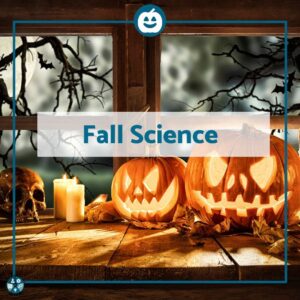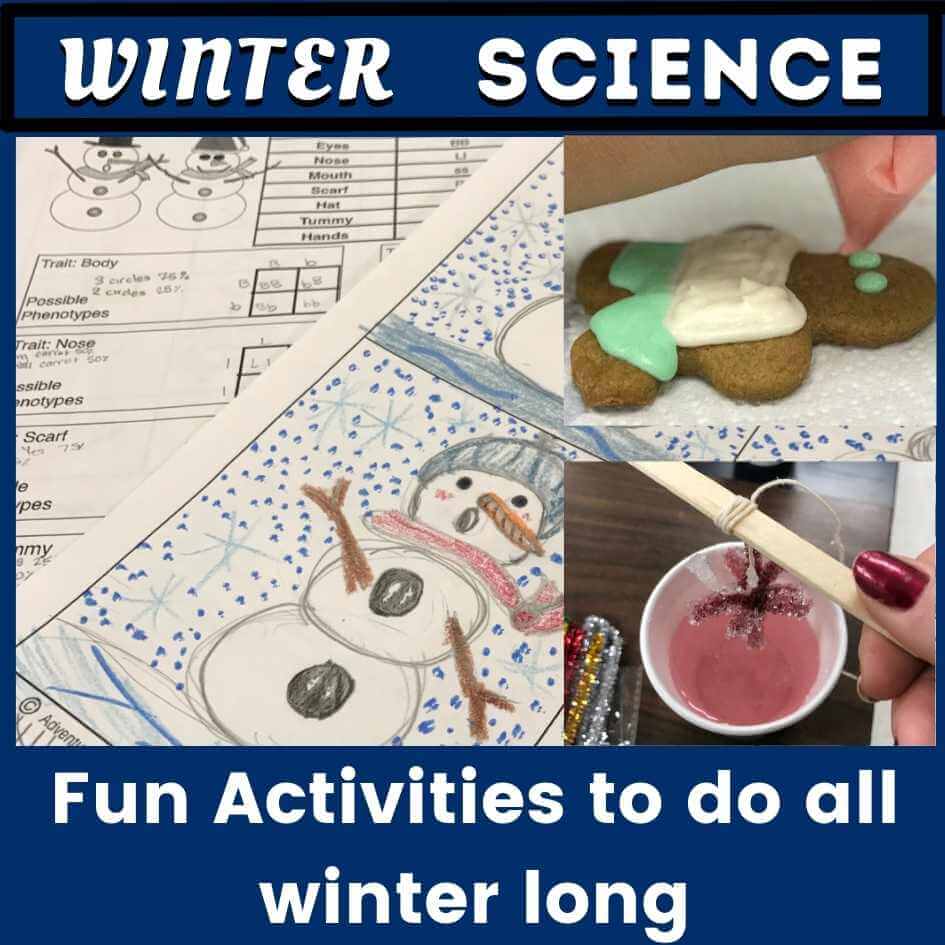
Winter is the perfect season to mix science with seasonal cheer! Dive into these fun winter science activities that will keep your students entertained while learning a thing or two.
Gingerbread Genetics: Creating the Ultimate Gingerbread Man
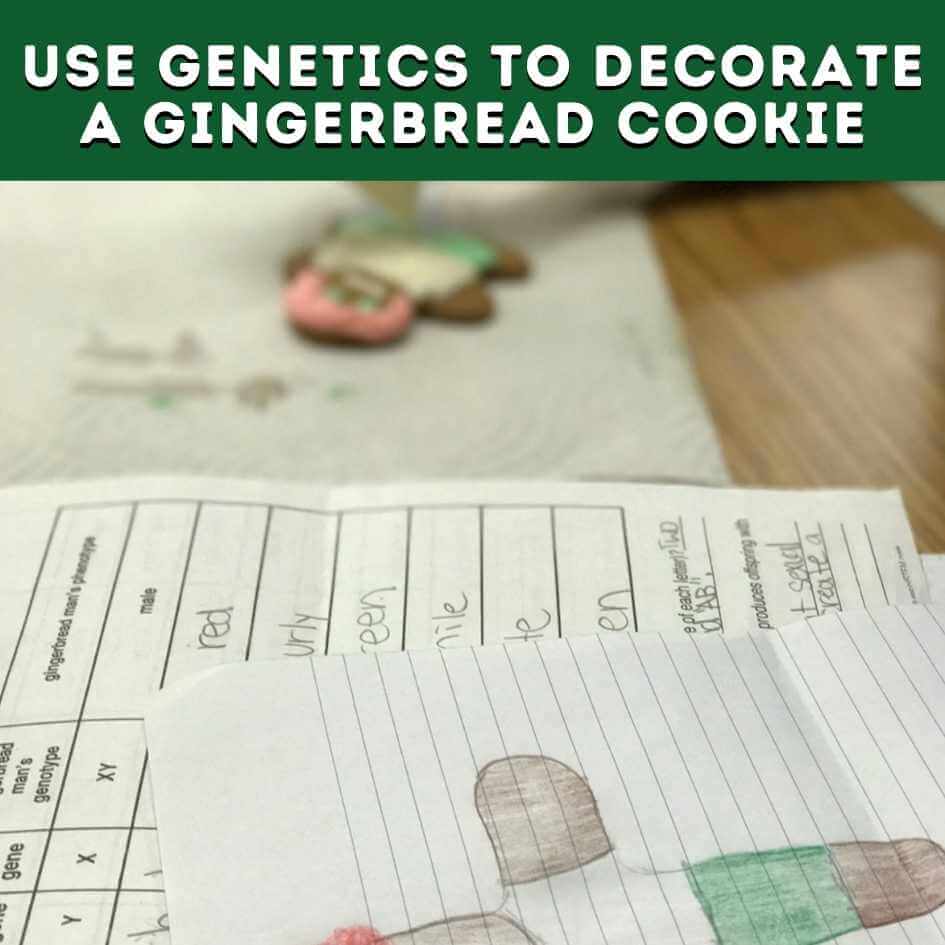
Get ready for a tasty genetics lesson! Explore phenotypes and genotypes by having students design their very own gingerbread man. Many of my students have never decorated a cookie, and most have never tasted gingerbread. In this activity, they flip coins to determine the genotypes and phenotypes of their gingerbread baby. It is such a memorable experience for them when they decorate their cookies based on the phenotypes and bring learning to life.
Quick Overview:
- Phenotype and Genotype Fun:
- Students dive into genetics by creating gingerbread men, each representing specific phenotypes (observable traits like frosting color) and genotypes (genetic makeup).
- The hands-on nature of decorating adds a delicious twist to learning.
- Coin Toss for Genetic Chance:
- To add excitement, students flip coins to determine the genotypes of their gingerbread babies. The coin toss simulates the randomness of genetic inheritance, adding an element of unpredictability.
- Decorating Delight:
- With coin-toss determined genotypes and chosen phenotypes, students embark on decorating their gingerbread babies. Chocolate chip eyes, gumdrop buttons, or icing smiles—choices are as diverse as genetic possibilities.
- Making Learning Memorable:
- Witness the magic as students turn genetic predictions into reality. Decorating based on phenotypes transforms abstract concepts into a hands-on experience, creating lasting memories.
Special Touch:
- Engaging Novice Bakers:
- This activity serves as a delightful introduction to cookie decorating and gingerbread tasting, offering a memorable experience that connects learning with sensory exploration.
Snowman Family Genetics:

Extend the genetic fun to your snowy friends! Students can use Punnett squares to predict the traits of their snowman family members. They will cross their two parents to determine what the four offspring will look like. Will their snowman have a carrot nose or a button nose? What type of hat will it have? Students can display their snowmen family around the room.
Activity Snapshot:
- Parental Traits:
- Students receive two snowman parents, each with distinct traits (body size, nose type, hat style).
- Using Punnett squares, they cross the parental traits to predict the characteristics of the snowman offspring.
- Trait Predictions:
- Analyzing the Punnett squares, students predict the traits of their snowman family—carrot or button nose? What style of hat?
- Snowman Assembly:
- Get creative! Armed with predictions, students use art supplies to construct their snowman family—bringing their genetic forecasts to life.
- Classroom Showcase:
- Display the unique snowman families around the classroom for an interactive and visually engaging genetic gallery.
Learning Objectives:
- Reinforce Punnett square concepts in a fun, hands-on way.
- Encourage creativity through art as students physically represent genetic predictions.
- Deepen understanding of genetic inheritance within the festive context of snowman families.
Crystal Snowflakes: Chemistry in the Winter Wonderland
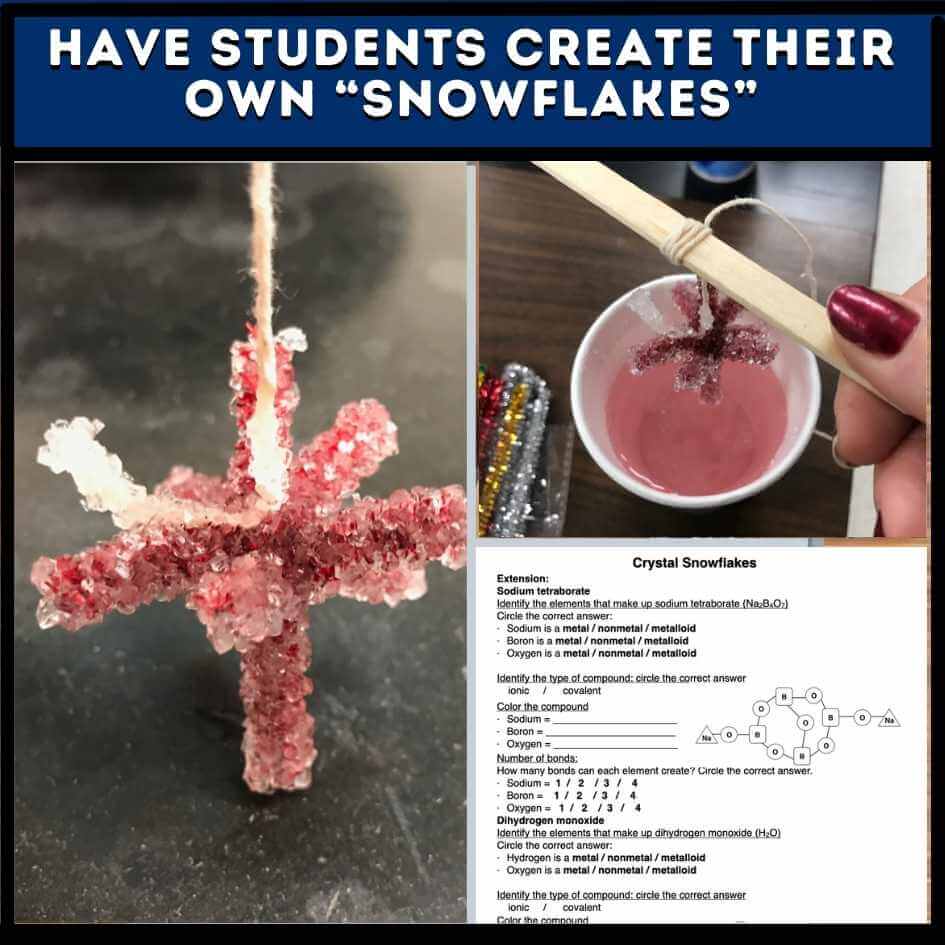
Discover the magic of chemistry with borax snowflakes. Students explore crystal formation as they create beautiful snowflakes using a borax solution. It’s a hands-on way to review chemistry concepts like metals, nonmetals, elements, and compounds while making their own winter wonderland decorations.
Quick Overview:
- The Magic of Crystals:
- Students discover the magic of crystal formation using borax, a compound that dissolves and grows intricate crystals when combined with water.
- Hands-On Exploration:
- Shaping pipe cleaners into snowflakes, students immerse them in a borax solution. As the solution cools, borax crystals blossom on the pipe cleaners, creating dazzling snowflakes.
- Reviewing Chemistry Concepts:
- The activity serves as a dynamic review of chemistry basics—metals and nonmetals dynamics, the journey from elements to compounds, and the fascinating concept of crystal growth.
- Winter Decor Delight:
- The outcome? Exquisite borax snowflakes doubling as festive decorations. Students proudly showcase their creations, bridging the gap between scientific exploration and winter aesthetics.
Candy Cane Striping: A Scientific Dissolving Experiment
Put on your lab coat and grab some candy canes! Use the scientific method to conduct an experiment on which liquid dissolves the stripes off a candy cane the fastest. Will it be hot water, cold water, soda, vinegar, oil, or something else? It’s a great review of the scientific method and on solubility of substances.
Quick Experiment Highlights:
- Liquid Variety:
- Students encounter an assortment of liquids like hot water, cold water, soda, vinegar, oil, and more, each standing as a potential solvent in the experiment.
- Scientific Method in Action:
- Following the scientific method, students predict which liquid will dissolve the candy cane stripes most rapidly, turning the candy cane into a delightful solute.
- Experimental Set-Up:
- Candy canes take a dip into each liquid, and the countdown begins. Students observe and document changes, discovering which solvent proves most effective in dissolving the candy cane stripes.
- Engaging Exploration:
- The hands-on nature of the experiment encourages active participation, making scientific concepts more tangible and enjoyable for students.
Key Takeaways:
- Scientific Method Skills:
- Students practice essential scientific method skills by formulating hypotheses, conducting experiments, and drawing conclusions.
- Playful Exploration:
- The experiment provides a delightful way for students to explore candy chemistry, offering a blend of playfulness and scientific discovery.
Save the Snowman STEM Challenge: Build, Test, and Rescue!
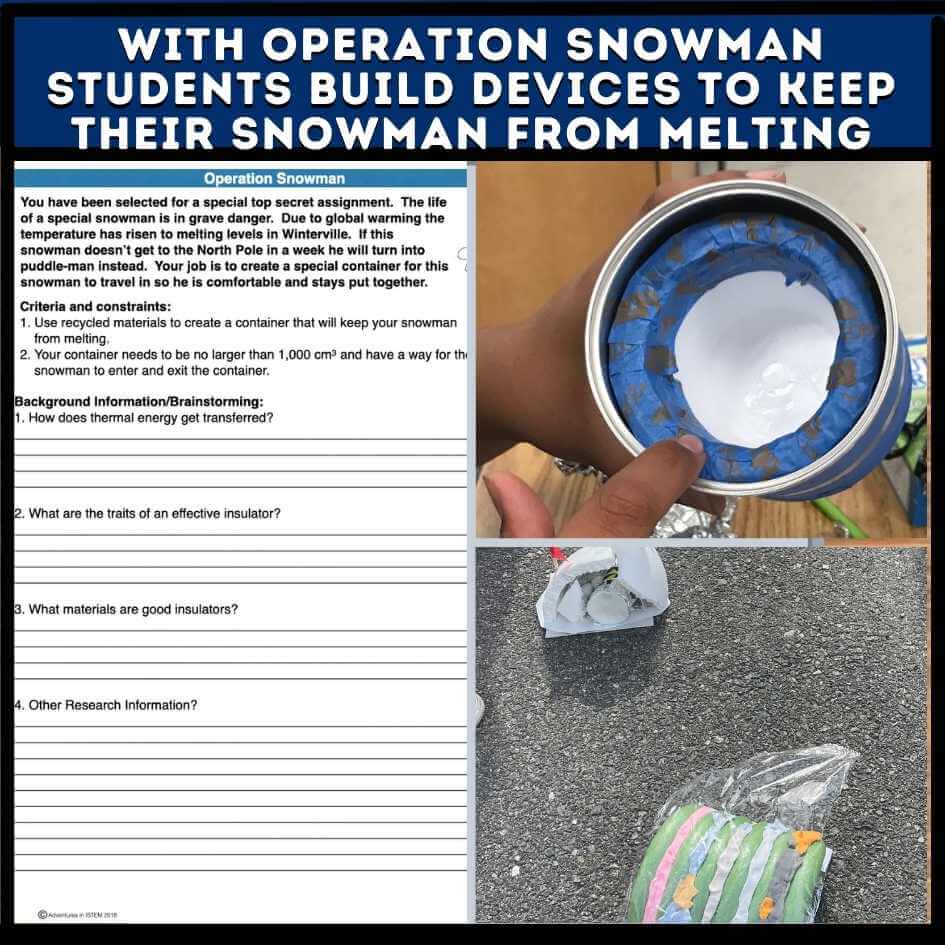
Engage your students in a STEM adventure to save the snowman from melting! Challenge them to design and build a device using everyday materials. Will their creations withstand the winter sun and keep the snowman frosty? I like to have my students use recyclable materials from home instead of buying them. They do research on insulators versus conductors and what materials make the best insulators. They brainstorm and come up with a blueprint. They then build their prototype, test it, and then modify it before the final test. This is a fun activity that usually takes a week to complete.
Quick Challenge Overview:
- Material Consciousness:
- Students use recyclable materials to promote resourcefulness and environmental awareness.
- Research Phase:
- Students research insulators and conductors to inform their design choices for the snowman-saving device.
- Brainstorming and Blueprinting:
- After gathering insights, students brainstorm ideas and create detailed blueprints, considering factors like material conductivity and sunlight reflection.
- Prototyping and Testing:
- Students build prototypes using recyclable materials, testing how well their creations withstand the winter sun and maintain Frosty’s frostiness.
- Modification Process:
- Post-test, students modify their designs based on observations, refining their creations for enhanced effectiveness.
- Final Testing and Reflection:
- The challenge concludes with a final test, allowing students to reflect on the process, challenges faced, and lessons learned.
Key Learning Elements:
- Practical STEM Application:
- Students apply STEM concepts in a real-world context, integrating science, technology, engineering, and mathematics.
- Environmental Responsibility:
- The use of recyclable materials instills a sense of environmental responsibility.
- Problem-Solving Skills:
- The iterative design process encourages critical thinking and adaptability based on testing outcomes.
Christmas Trees: Real vs. Artificial – The Great Debate
Ignite a spirited debate in your classroom about Christmas trees! Explore the differences between synthetics and natural products. Discuss the environmental impact, sustainability, and personal preferences in this festive and informative discussion. It can get pretty heated as your students make their claims, support them with evidence, and then defend them while counterarguing against the other choice.
Quick Debate Structure:
- Introduction to Tree Choices:
- Introduce natural and synthetic Christmas trees, offering brief insights into their characteristics and production methods.
- Environmental Impact Check:
- Dive into the environmental impact of both choices. Students quickly research and present evidence on deforestation for natural trees and the production and disposal of synthetic trees.
- Sustainability Flash:
- Discuss the sustainability aspects of each option. Encourage students to consider long-term sustainability concerns associated with both natural and synthetic trees.
- Personal Preferences:
- Briefly share personal preferences and traditions regarding Christmas trees to highlight the diversity of perspectives in the debate.
- Claim and Counterclaim:
- Students swiftly take positions, making claims supported by evidence gathered during research. The debate unfolds with quick counterarguments against the opposing choice.
- Speedy Reflection:
- Conclude with a rapid class reflection, urging students to consider shared perspectives, evaluate argument effectiveness, and reflect on the impact of evidence and reasoning.
Key Takeaways:
- Rapid Critical Thinking:
- Students engage in quick critical thinking as they synthesize information to form concise and compelling arguments.
- Swift Communication Skills:
- The debate sharpens students’ communication skills as they articulate claims, support them with evidence, and engage in quick counterarguments.
Winter science has never been this enchanting! These activities are sure to captivate your students’ imaginations and make learning a joyous adventure. Embrace the magic of the season while fostering a love for science in your classroom. Let the winter experiments begin!




